 At Christian Dior Couture, scraps of fabric are upcycled into unique window decorations. Image: Andrea Cenetiempo
At Christian Dior Couture, scraps of fabric are upcycled into unique window decorations. Image: Andrea Cenetiempo
France’s top luxury trade body took the unusual decision Feb. 16 to distribute a print magazine that would ride piggyback to 34,000 households receiving The New York Times newspaper in wealthy Manhattan. The singular focus of the ad-supported supplement highlighting disparate efforts by various French luxury brands? Sustainability.
That seemingly paradoxical step from Comité Colbert acknowledges the key power of U.S. consumers, particularly in New York, to tip luxury sales. The magazine drop was marked by a morning seminar summoning some of the good and great of French luxury at the Villa Albertine on Fifth Avenue in New York.
“We are targeting the American market, the largest for our industry,” said Bénédicte Épinay, CEO of Comité Colbert. “We know that American consumers have become particularly sensitive to sustainability.”
All 93 members of Comité Colbert – from Dior to Givenchy and Chanel, Hermès to Cartier – are in the process of adopting sustainable practices across the entire supply chain of their sourcing, manufacturing and distribution processes.
In this move, these maisons not only enhance their care of the environment, but also head off consumer concerns over circularity in luxury even as fashion comes under severe scrutiny.
Ms. Épinay, in this interview with Luxury Roundtable CEO Mickey Alam Khan, outlines Comité Colbert’s commitment to sustainability, steps being taken by the association, logic behind the 51-page New York Times magazine supplement and its desired outcomes from ongoing initiatives. Please read on:
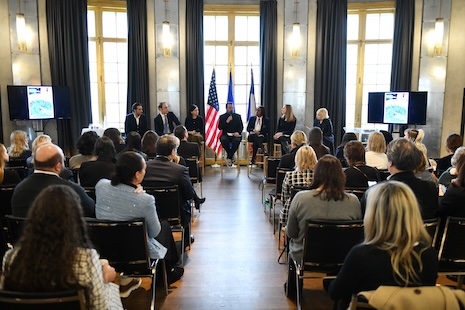 Guests attend Comité Colbert's Third Journal on 'Sustainability In The French Luxury Industry' at Villa Albertine on February 13, 2024 in New York City. (Photo by Craig Barritt/Getty Images for Comité Colbert)
Guests attend Comité Colbert's Third Journal on 'Sustainability In The French Luxury Industry' at Villa Albertine on February 13, 2024 in New York City. (Photo by Craig Barritt/Getty Images for Comité Colbert)
Why is sustainability on top of the agenda for the French luxury sector? Is this drive toward sustainability led by brands, pressure from consumers or diktat by authorities and via regulation?
Sustainability is at the top of the agenda of the French luxury sector because our industry has the ambition and responsibility to pave the way for others.
It is imperative with our financial resources and our role in the community that we innovate on all matters of sustainability, including human resources, the need for diversity and inclusion, and the ecological transition.
At Comité Colbert, our work on sustainable development dates back to 2003. That year, we acted as a platform for the exchange of best practices between our companies.
Then, in 2008, we commissioned the international social and environmental rating agency, Vigéo, to work with us on the specific notion of sustainability in the luxury sector to inspire and structure actions and standardize policies.
Then, in 2011, we listed 15 objectives classified into four values around aesthetics, high standards, sustainability and respect.
In detail, the first and most obvious reason for our mobilization lies in the luxury industry's obligation to protect raw materials used for our products.
We, as luxury brands, are responsible for ensuring there is a plan in place for the regeneration of these raw materials and, by extension, biodiversity as a whole.
It is not only today’s consumers that are very aware of these issues. It's also the case for employees, citizens and laws makers, particularly in the European Union, where 166 regulations are being discussed in the context of the “Green Deal” project that aims to set the EU on the path to a green transition, with the goal of reaching climate neutrality by 2050.
Sustainability can mean many things to many people. Is there a definition or yardstick by which Comité Colbert stands?
Comité Colbert worked with the Vigéo rating agency to define sustainability as four key values and objectives.
First, aesthetics in relation to the promotion of the diversity of cultural expressions, protection of cultural heritage, protection of creativity and intellectual property rights.
Second, excellence of the eco-design of products and packaging.
Third, durability with the promotion of know-how, protection of biodiversity and sustainable use of resources.
And, fourth, respect to enhance working conditions and protecting of fundamental rights, which includes prevention against discrimination and promotion of equal rights, the fight against climate change, and the reduction of impact on water, air and soils.
Comité Colbert also stands with the UN’s definition of sustainable development: "Meeting the needs of the present without compromising the ability of future generations to meet their own needs.”
Our members have been practicing this naturally for centuries in creating items that are aesthetically pleasing and long-lasting.
We also include sustainability in the raison d’être that drives all of our actions: “To passionately promote, to patiently transmit, and to sustainably develop French savoir-faire and creation in order to inject a new sense of wonder.”
Our vision of sustainability also encompasses the social responsibility and the role we want to play in the organized community in which we live.
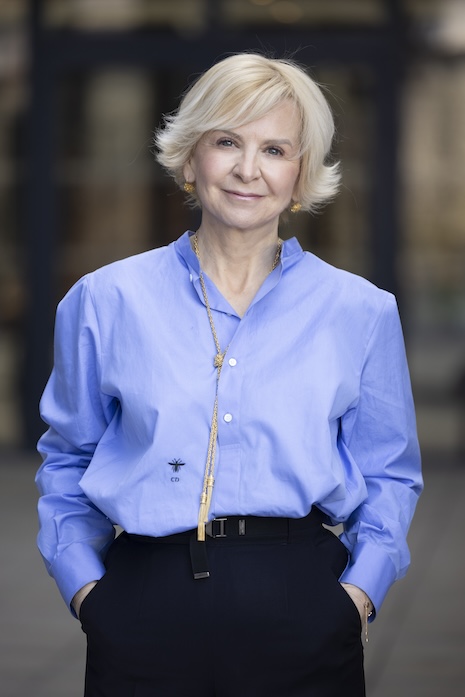 Bénédicte Épinay is CEO of Comite Colbert. Image: © David Atlan
Bénédicte Épinay is CEO of Comite Colbert. Image: © David Atlan
True luxury products are about enduring quality, which itself implies longevity. That, in and of itself, made luxury the original sustainable product. Now, however, branding is triumphing over product quality and provenance. So, your move seems a corrective measure, right?
Luxury products are sustainable, repairable, transmissible and can be resold. It's a truly circular economy, and our magazine demonstrates the numerous commitments of our 93 members across the entire value chain with transparency.
We illustrate this point by showing creations from our houses, where designs that are three or four hundred years old are still produced today with the same rules of art.
I believe that the strength of our brands lies in the consistency with which they carry out the same gestures, handed down from generation to generation.
I also believe that France must command respect when it comes to preserving all the particularities and rules that make us unique, though we do recognize that the industry has changed over time due to modernity, new standards and changes in tastes and habits.
France currently has 281 recognized "métiers d'art" (artistic crafts), identified by the Institut National des Métiers d'Art (INMA).
This institute upholds the standards and traditions associated with these specialized skills, granting the "Living Heritage Company" label to businesses that demonstrate exceptional mastery and commitment to preserving these rare forms of craftsmanship.
It’s worth noting that you still need a workshop of at least 20 people, specialists in tailoring and other criteria, to obtain the haute couture label.
Since 1924, the “Meilleurs Ouvriers de France” (Best Craftsmen of France) competition has been judging the technical measures, innovation and respect for tradition with the same rigor, in order to achieve the level of excellence, efficiency, speed and perfection required for a successful masterpiece.
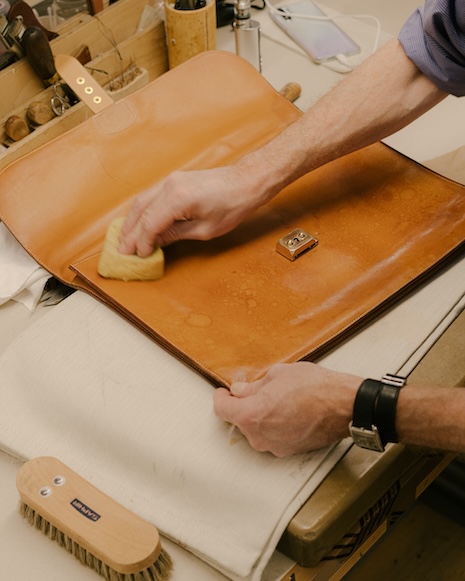 In Hermès’s repair workshops, more than 100 craftsmen specialize in the restoration of
In Hermès’s repair workshops, more than 100 craftsmen specialize in the restoration of
saddlery and leather goods. Image: ®MVerret_1623
The processes involved in making a product sustainable are not cheap nor easy to implement and vary by industry sector. How can sustainability be justified financially?
What distinguishes a luxury product from an ordinary item is the embedded dream – its intangible component. This comes from the creativity of the product, the care that the experts have put into making, and the quality of materials used to develop the item.
While this costs more to produce, it’s the very essence of our entire industry.
The sustainable development is an additional, subtle element in this equation, although it’s becoming more prevalent as the consumer becomes more aware.
We also don’t look at sustainability as a competitive advantage.
Faced with common interests and challenges, our members have begun to join forces and resources to tackle environmental challenges.
For example, Chanel, L'Oréal luxe, Clarins and Sephora are testing a pilot return scheme for cosmetics packaging.
LVMH LIFE 360, together with Chanel and Perrier Jouët Champagne and Martell Cognac, announced they will accompany suppliers in their ecological transitioning process.
Since 2005, the RJC Code of Practices (COP) has been the global standard for the responsible jewelry and watch industry, focusing on business ethics and responsible supply chains. It brings together the players of this industry who want to transform the way we work to be more efficient, to catalyze change through the supply chains of their members, and provide a forum for sharing perspectives, exchanging ideas and finding solutions to shared challenges.
When Chloé became the first luxury brand to obtain its B.Corp label, we organized a meeting around their approach to explain the difficulties and benefits.
Since then, a lot of our member companies have also sought to obtain this label. That's the strength of the collective and that's how the luxury industry is tackling the challenges of sustainability, in coalition, without losing sight of the commercial and financial stakes to support its vast work force.
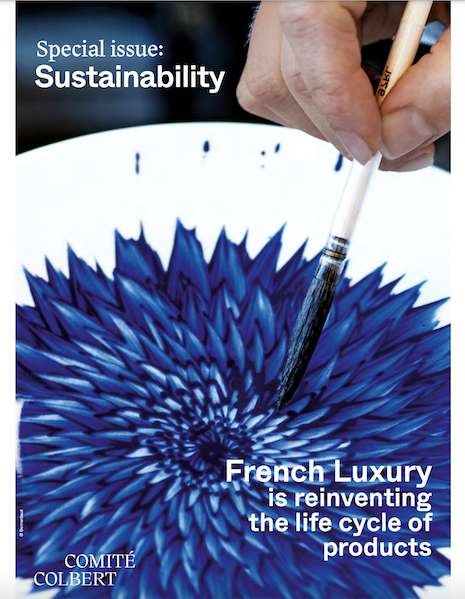 Comite Colbert Sustainability magazine supplement that was sent to select 34,000 Manhattan households receiving The New York Times. Image: Comite Colbert
Comite Colbert Sustainability magazine supplement that was sent to select 34,000 Manhattan households receiving The New York Times. Image: Comite Colbert
Comité Colbert recently produced a magazine supplement sent out to 34,000 households receiving The New York Times in Manhattan. What was the reasoning behind that and what was special about the content?
The first ESG report was published in the 2021 chapter in the United Nations' Sustainable Development Goals and was distributed to our shareholders. It was a very important first step.
In 2022, to broaden our target audience, we decided to shift the report into a magazine and distribute 20,000 copies in the French economic daily, Les Echos, in France during Earth University at Unesco.
This year is another step. We are targeting the American market, the largest for our industry.
We know that American consumers have become particularly sensitive to sustainability.
A study led by Bain & Company and Positive Luxury – LuxCo 2030: A Vision of Sustainable Luxury – shows that the luxury industry has entered a “sustainability decade,” and Gen Z customers are very sensitive to luxury brands’ positive impact in the world.
Another study led by Sociovision showed that 83 percent of American consumers prefer responsible luxury products.
The magazine is an opportunity to share not only best practices but is also our duty to act, to inspire and to question. It’s also complementary to our other actions and contributes to an ongoing dialogue on ESG issues.
Almost all of our maisons have contributed to its content, sharing many initiatives they have executed, sometimes specifically in the United States.
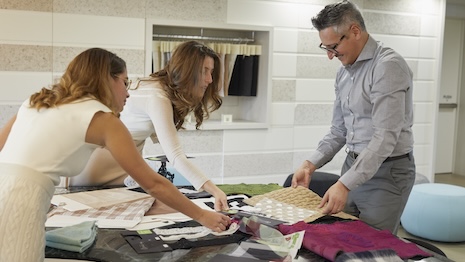 Staff at a Kering maison working at the atelier. Image: ©Lorenzo Palizzolo
Staff at a Kering maison working at the atelier. Image: ©Lorenzo Palizzolo
Can you cite some leading examples of how French brands are turning sustainable in their practices?
Investing in sustainable practices is a priority for all of our maisons.
With a questionnaire sent out to all our members, we have gathered key figures of sustainability in the French luxury industry.
For example, 96 percent are measuring their carbon footprint up to scope 3. It's a fundamental first step to understanding the areas for improvement, and our companies have taken it.
Ninety-six percent of them have also created a CSR department – since 1992 at LVMH and 1996 at Kering with an ethical charter – to integrate sustainability into their strategy.
The result lives up to the ambitions and expectations since 87 percent of our companies carry out actions in favor of biodiversity, 89 percent have put in place eco-design their packaging, and 100 percent have implemented waste-reduction and recycling policies.
Which is the easiest place to start if a brand has to adopt sustainable practices?
The challenge of sustainability is huge.
A good place to start would be creating a CSR department, raising awareness and training employees on sustainability.
As mentioned previously, measuring your carbon footprint is also a fundamental step in identifying the most impactful first step.
Getting inspired from other practices in the industry and joining forces to take action is also very important.
At Comité Colbert, we provide training on climate change to our maisons’ employees.
For over 10 years, we’ve also collected and shared data from our 93 members to inspire and encourage cooperation, including collecting and sharing over 400 best practice sheets, sending out of a questionnaire on sustainable development practices, and presentation of studies.
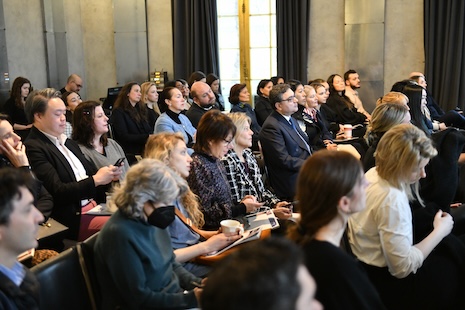 Guests attend Comité Colbert's Third Journal on 'Sustainability In The French Luxury Industry' at Villa Albertine on February 13, 2024 in New York. (Photo by Craig Barritt/Getty Images for Comité Colbert)
Guests attend Comité Colbert's Third Journal on 'Sustainability In The French Luxury Industry' at Villa Albertine on February 13, 2024 in New York. (Photo by Craig Barritt/Getty Images for Comité Colbert)
What does success in Comité Colbert members achieving sustainability goals look to you?
We are proud of the collective achievements in our industry.
Our maisons are continuing to transform their strategies, and we highlight their commitments in an annual report to help us measure the progress of our sustainability goals.
In a reflection format that we host every year, we also interview the youngest employees of our houses to find out their expectations and ideas for sustainable development. The exciting result of the interviews informed original ideas, which we debated among ourselves.
However, we know that we have a duty to go further.
Comité Colbert has been involved in sustainable development since 2003.
Since then, we regularly bring together the leaders of our members to reflect on sustainability and define our priorities.
We are currently working on redefining our priorities and making joint commitments for the years to come.
How will Comité Colbert convey to the different publics – consumers, regulators, peers, influencers, analysts – that its members are not only implementing sustainable practices within the organization, but also succeeding?
The magazine is clearly one of the chosen options, but we also regularly participate in conferences like the Earth University at UNESCO to raise the awareness of our maisons and their commitment.
Twice, we have exhibited the eco-designed products of our members in trade fairs. It is important to do this on a collective basis, even if our maisons do it individually.
We also communicate with lawmakers in Paris, of course, but particularly in Brussels where we advocate for the European luxury industry as part of the Green Deal, which aims to make the European Union carbon neutral by 2030.
Our objective is not to oppose future regulations but to highlight our specificities for a better understanding of all.
